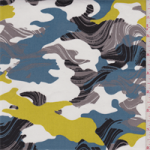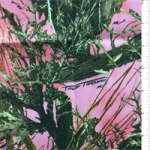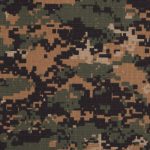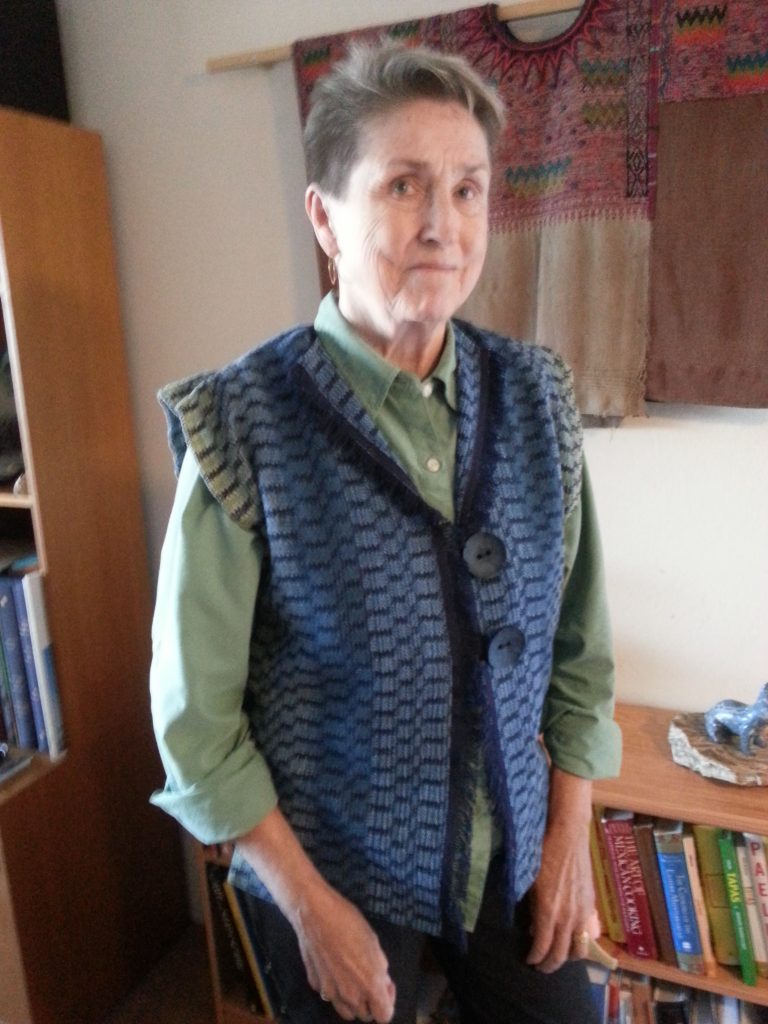Camouflage consists of things such as leaves, branches, or brown and green paint, which are used to make it difficult for an enemy to see military forces and equipment. … Camouflage is the way in which some animals are colored and shaped so that they cannot easily be seen in their natural surroundings.
As we were preparing for a trip to Africa this summer, both our tour company and the guidebooks we consulted warned against bringing camouflage or military style clothing. We thought this advice was quaint, similar to the warning to avoid colors such as blue and black, alleged to attract tsetse flies. Online searches validated the advice about blue and black; scientists conducting field tests with over twenty different colored panels determined that phthalogen blue was the strongest attractant. Greenish yellow, much more common in my wardrobe, was found to be least attractive, so that problem was solved. Even more reassuring was that we weren’t going to be travelling in areas with tsetse flies .

The mystery of the opposition to camouflage fabric remained, however, until we queried traveller friends, who informed us that the armed forces in some African countries were suspicious of strangers showing up looking “military”. Given the post World War II history of much of sub-Saharan Africa, their suspicions make a good deal of sense. Why go around dressing like a mercenary if you aren’t going to get paid like one?

This problem solved itself with no effort whatsoever. Although we have spent a lot of time camping, hiking and conducting archaeological projects in the Great Outdoors, we have never owned any camouflage clothing. In fact, our Bay Area search and rescue colleagues tend to snicker at teams from some of the rural areas who show up at meetings dressed like Cabelas* salesmen, since our aim is to attract the attention of lost people, rather than blend into the environment. We even avoid flashlights, jackets and other equipment in Mossy Oak or other “outdoorsy” patterns. Orange and red, yes; earth tones not so much.
You might think this would end the discussion, but when has that happened once you’re fixated on a topic? Suddenly we noticed that our grandson’s T shirt was made from a knit patterned with interlocking angular dinosaurs, that a woman in exercise class had dazzle camouflage yoga pants, that a pickup shell……
As it developed into a minor obsession, the internet intruded, providing endless time-wasting opportunities to explore the vast world of camouflage.
Fortunately, the available colors and clothing styles discouraged any purchases; unfortunately they triggered the “I can do better” thinking which leads us in so many productive directions. Placing blame where it is due, on our weavers’ study group and a workshop, I decided to make my own camouflage fabric. Last fall our study group’s challenge was for each member to weave at least two techniques we hadn’t previously tried. Based on a recent workshop, I’d already planned a crimp cloth scarf holiday present for a daughter. The second structure was a set of dish towels in Ms and Os. Then a Sarah Jackson color workshop introduced summer and winter. That was very enjoyable, so, rationalizing that a distant friend’s previous dishtowels were certainly worn to rags by now, I used Sarah’s Handwoven summer and winter dishtowel pattern to weave a set in Elizabeth’s preferred colors, blue and yellow, filling in the range with other blues and greens.
I sampled on the leftover warp using dark marine blue as the unifying weft color and really liked the effect. Not surprising, since they are my favorite colors too.
Knowing that knitting spots is a lot easier than weaving them, I decided to have my colors in the warp and my pattern in the weft. Adding a partial cone of 8/2 variegated cotton (Blue Jay), left over from a “denim” vest project woven last year, to four colors of blue and green cottlin, I warped a single width symmetrically with the widest stripes in the center, using a ratio of 5:4:3:2:1, with 1” selvedges and 2” seam allowance in white between the two sides. To avoid obvious stripes, four warps of each color were threaded alternating warps of the adjacent color.
The weft is the dark marine blue which worked so well on the sample, threaded in Ms and Os, which are very simple to thread on a four harness loom. The alternating patterns are 1-2,1-2,3-4,3-4 and 1-3,1-3,2-4,2-4 for each basic block, which washes into a little circle or a narrow bar. The nice aspect of this structure is that each set of floats is quite short, so the threading can be repeated to create Os of any length. The dishtowel pattern only had single, double and triple threadings, but on the fabric I made some longer. Since both sides of the vest were woven at the same time, there wasn’t a problem lining up the pattern to join the pieces, since the weft rows always matched, but the different lengths of Os could just happen wherever.
I had no idea what pattern to use for the vest, except that the finished garment had to fall below my widest part, and anything with a lot of piecing wouldn’t work well with the mix of colors and texture. The finished fabric was more than long enough, but drew in enough that it would sew up too snugly to close without pulling on the side seams. (Stop smirking—you’ve been there too!) This meant that either side panels would have to be constructed from the excess yardage, always a problem matching shapes and colors, or connecting bands of the same or another material could alter the vest into a tabard. There were additional considerations: open front or closed, edge and hem finishes?

Sue in her Camouflage vest
Grosgrain ribbon solved all these issues. The simplest neck finish was to cut the oval and turn it under with a thin ( ¼ inch) grosgrain facing. Sewing the same narrow grosgrain along the warp closest to the center selvedge strip stabilized it so the white warps could be pulled, leaving a perky marine blue front fringe. Wider ( 1 ½ inch) grosgrain faced the hem and joined the fronts to the back. The same ribbon backed the buttons, while it anchored thin ribbon button loops on the other side. In order to moderate the armhole droop the shoulders have a dart basted most of the way out, which helps keep the vest more aligned vertically, the better to display my hard won “weaver’s camo”.
*cabelas salesmen- sellers of camouflage designed for hunters.